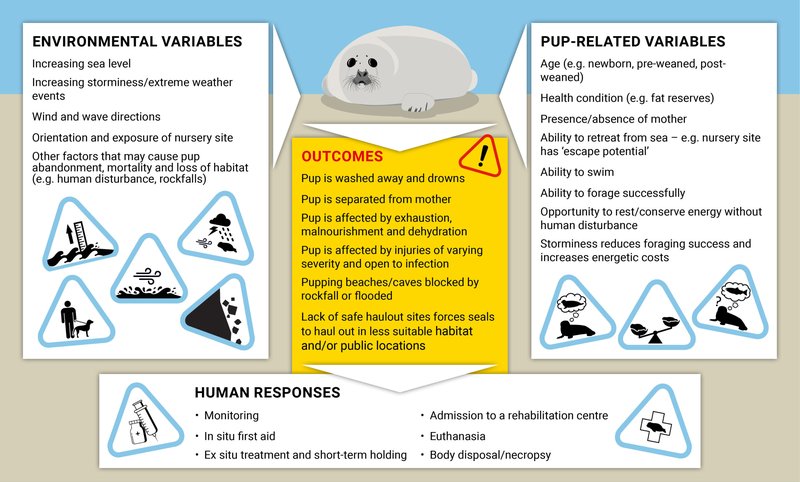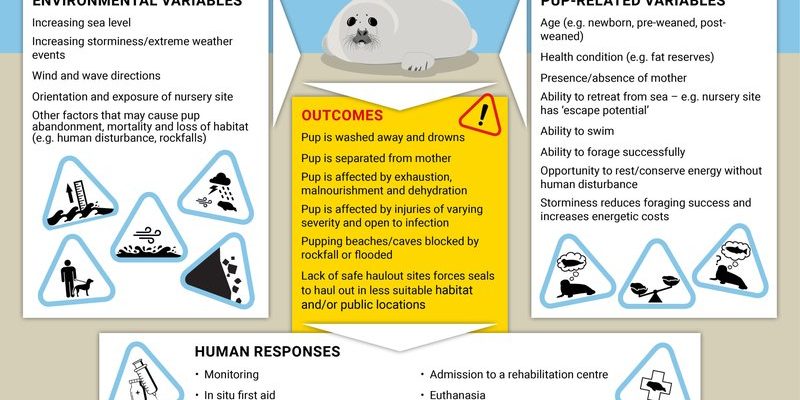
In a world where our climate is rapidly shifting, seals are feeling the effects in various ways. From melting ice caps to changing food supply, these majestic creatures are facing challenges that can seem overwhelming. Let’s dive in and explore how climate change is impacting seals, what it means for their survival, and why we should care.
Melting Ice and Habitat Loss
One of the most visible impacts of climate change on seals is the melting of sea ice. Take the **harp seal**, for example. These seals rely on the ice for breeding and resting. Without sufficient ice, their habitats shrink, making it harder for them to give birth and raise their pups. You might think of ice as just a cold block, but for seals, it’s their nursery and playground.
As temperatures rise, the Arctic ice melts earlier in the spring and forms later in the fall. This shifting timeline can confuse seals, disrupting their life cycles. Imagine if your home suddenly became unlivable for part of the year. That’s the reality for seals, as their once-stable habitats become increasingly unpredictable.
It’s not just harp seals that are affected. **Ringed seals**, another species that depends on ice, are similarly at risk. They carve out breathing holes in the ice, which are crucial for their survival. As the ice thins, these holes become fewer, making it difficult for them to thrive. The loss of ice isn’t just a minor inconvenience; it’s a matter of life and death.
Changes in Food Supply
What happens when the environment changes? The food supply changes too. Seals primarily feed on fish and squid, so their diet is directly linked to ocean health. As the ocean warms, fish species are shifting their ranges in search of cooler waters. This could leave seals scrambling to find their favorite snacks in unfamiliar areas.
For instance, **Atlantic seals** often hunt for cod and herring. But with warming waters, these fish might migrate to different locations. Picture a restaurant menu suddenly changing to items you don’t like. That’s what seals are facing—less food where they used to find plenty. If they can’t adapt quickly enough, it can lead to malnutrition and decreased pup survival rates.
Moreover, changing ocean temperatures can also affect the abundance of prey. With shifts in currents and ecosystems, some fish populations may decline, creating a domino effect. Seals depend on a stable environment to feed and reproduce, so any disruption can have cascading consequences for their populations.
Increased Human Interaction
With seals moving to new areas in search of food, they often end up closer to human activities. This can be a recipe for disaster. Increased encounters with fishing boats, shipping vessels, and coastal developments can lead to more accidents. It’s like trying to navigate a busy street with cars zipping back and forth—risky and stressful.
When seals venture into areas populated by humans, they can also face challenges like entanglement in fishing gear or habitat degradation due to pollution. This can lead to injuries or fatalities, making it even harder for seal populations to recover. The more humans encroach on their habitats, the less safe they become.
You might be wondering how we can help. It starts with awareness. If we understand that our actions have consequences, we can take steps to minimize our impact on seal habitats. Simple changes, like supporting sustainable fishing practices, can make a big difference.
Increased Disease and Health Risks
Warmer temperatures can lead to an increase in diseases that affect seals. Just like people, seals can get sick, and climate change can make it easier for pathogens to spread. For instance, warmer waters can allow certain viruses to thrive, exposing seals to health risks that weren’t previously a concern.
Stress from habitat loss and food scarcity also weakens seals, making them more susceptible to illness. Imagine being constantly stressed at work; you’d probably catch more colds! In a similar way, seals that struggle to find food or a safe place to rest are not as healthy as they should be.
Increased human interactions can further expose seals to diseases, as they come into contact with domestic animals or contaminated environments. This multi-faceted threat makes it vital to monitor seal populations and their health closely.
Conservation Efforts and What You Can Do
So, what can we do about all of this? Thankfully, conservation efforts are underway to help protect seals and their habitats. Organizations are working to restore habitats, reduce pollution, and protect marine ecosystems. It’s a bit like planting a garden—small steps can lead to a thriving environment if we all pitch in.
You can help, too! Supporting marine conservation organizations and spreading awareness about the challenges seals face is crucial. Even simple actions, like reducing plastic use or participating in beach clean-ups, can positively impact marine life. The more we care for our oceans, the more we can support seals and other wildlife.
Additionally, advocating for policies that address climate change can lead to broader impacts. It’s about shifting our mindset—every little bit counts. The health of seals is tied to the health of our planet, and together, we can make a difference.
The Future of Seals in a Warming World
Looking ahead, the future of seals hinges on our actions today. Climate change may be a daunting issue, but it’s not insurmountable. If we focus on mitigating its effects, we can create a world where seals can thrive once again.
The survival of seals reflects the health of our oceans. If we can tackle climate change and its impacts, we not only help seals but also ourselves. After all, a healthy ocean means a healthier planet for everyone.
In conclusion, climate change is reshaping the world of seals, affecting their habitats, food sources, and health. It’s a reminder of how interconnected we all are in this environment. So let’s take action, raise awareness, and support the conservation of these incredible creatures before it’s too late. You see, saving seals isn’t just about them; it’s about our shared home, beautiful and fragile.

